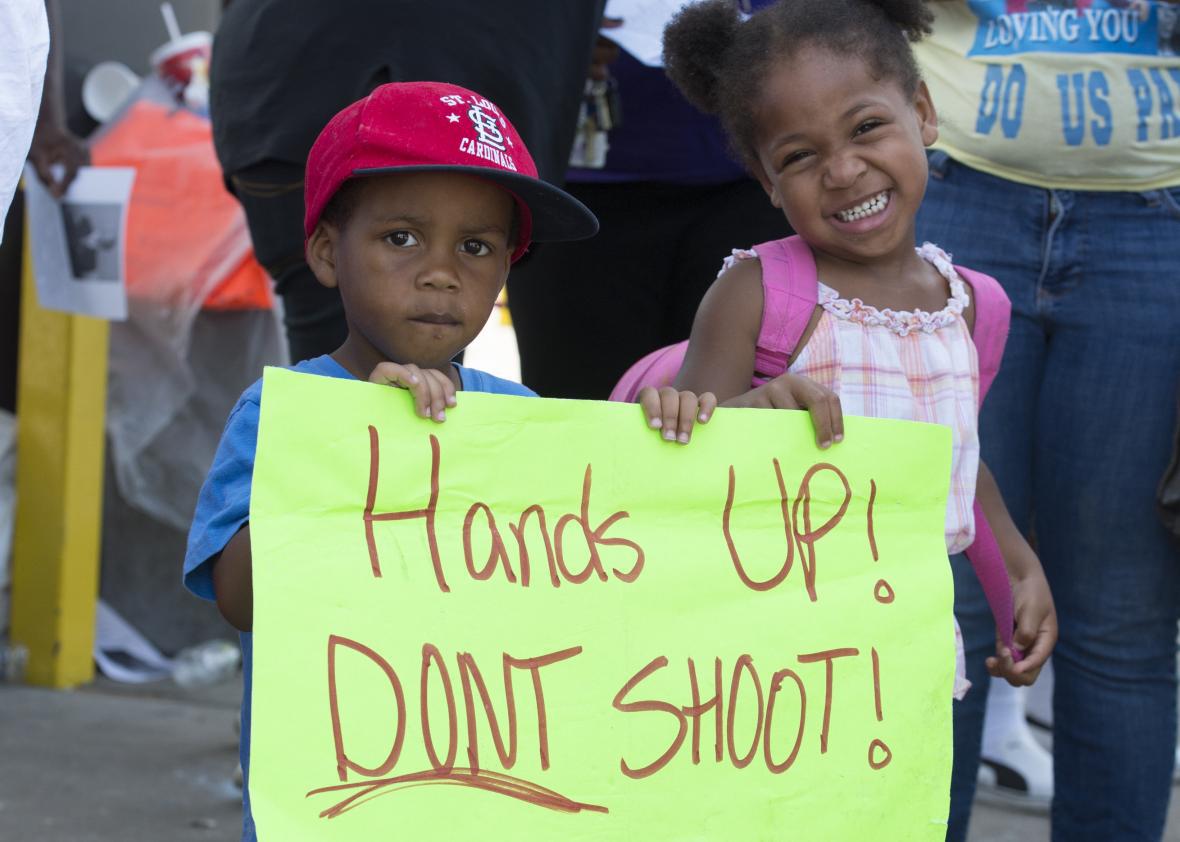If you listen to just one piece of media this week, let it be Nikole Hannah-Jones’ This American Life report on the failing Normandy School District outside of St. Louis—and the high school Michael Brown graduated from eight days before being killed by a Ferguson police officer a year ago this week. In the hourlong segment, Hannah-Jones identifies school segregation as the primary source of educational inequality in America and tells an amazing story of how one of the most segregated school districts in the country accidentally adopted an antidote.
Of Michael Brown’s killing last summer, she writes in the New York Times piece accompanying the episode:
Brown quickly became a national symbol of police violence against black youth, but … I realized he was also a symbol of something much more common. Most black children will not be killed by the police. But millions of them go to a school like Michael Brown’s: segregated, impoverished and failing.
The TAL segment—called “The Problem We All Live With,” after the Norman Rockwell painting of Ruby Bridges, the first black child to attend an all-white elementary school in the South—uses the failing, unaccredited Normandy School District to examine the only proven solution to this country’s massive, much-discussed achievement gap between black and white students. “I found this one thing that really worked, that cut the achievement gap between black and white students by half,” Hannah-Jones says in the introduction to the segment. “But it’s the one thing that we’re not really talking about.”
The “thing” in question is integration, or as host Ira Glass puts it, “old-fashioned Brown v. Board of Education 1954 technology.” Hannah-Jones says that, between 1971, when the country really started making formal efforts to desegregate schools, and 1988, when these efforts peaked, the achievement gap between black and white students in reading went from 39 points to 18. But alas, in the years since 1988, we decided that integration failed and allowed schools to resegregate. Just like that, the achievement gap started to widen again.
Why exactly does integration work? It doesn’t magically suffuse kids with intelligence or the desire to learn, Hannah-Jones, who was herself a product of bussing, says; it’s far simpler than that: “What integration does is it gets black kids in the same facilities as white kids, and therefore it gets them access to the same kinds of things those kids get: access to quality teachers and quality instruction.” And schools with high concentrations of poverty will likely never catch up to schools with less disadvantaged kids, Hannah-Jones says: “If you’re surrounded by a bunch of kids who are all behind, you stay behind. But if you’re in a class where you have some kids behind and some kids advanced, the kids who are behind tend to catch up.”
The story Hannah-Jones tells—of how the Normandy School District got so bad that students were given the option to be bussed to better schools in the surrounding, predominantly white areas, and the ongoing controversy over the unintentional integration that followed (get ready to be thoroughly appalled by the white parents who oppose the bussing)—offers an unforgettable capsule of the eternal debate over segregation and educational inequality in this country. Just listen. And while you’re at it, read the piece Hannah-Jones wrote for ProPublica in December, “School Segregation, the Continuing Tragedy of Ferguson.” You’ll never look at failing urban schools—or the horror of Michael Brown’s death—the same way again.
